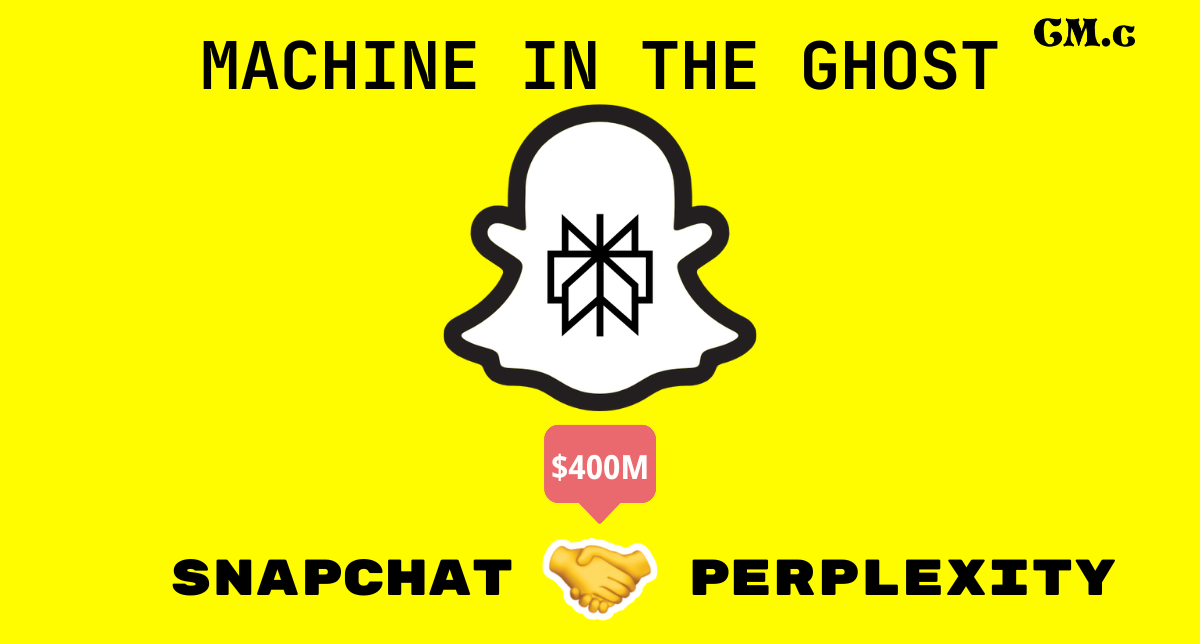Machine in the Ghost
Perplexity finally found its social network…kind of.
The Google-but-AI search engine inked a deal with Snapchat to be it’s in-app AI answer engine. For the low, low price of $400 million.
Starting in early 2026, Perplexity will appear in the popular Chat interface for Snapchatters around the world. Through this integration, Perplexity’s AI-powered answer engine will let Snapchatters ask questions and get clear, conversational answers drawn from verifiable sources, all within Snapchat.
Perplexity has been following the Google playbook and this is straight from the pay-for-default-status section.
The announcement noted:
Revenue from the partnership is expected to begin contributing in 2026.
I’m interested what the plan is to create that revenue. Snap has the most successful membership option of any social media platform. Will Perplexity Pro be added in?
Will this lay the groundwork for Snapchat Search Ads (a la TikTok)?
Will Perplexity function as a new data source for targeting and get a revenue share?
Similar to My AI, Snapchatter messages sent to Perplexity will help enhance personalization on Snapchat.
On the face of it, it’s a weird fit. But both platforms fill a similar role in their respective industries, not the main characters but also not nameless extras.

Love this Why People Buy pyramid.
It aligns with a messaging framework I like to use for clients.
The best marketing has messaging for each level, acknowledging that people are looking for different things at different times.
Developing this for your brand would not be a waste of time.

SEO 4 AI is Just SEO
SEO 4 AI is the buzzy topic of the moment (with the acronym collection to prove it). But is it any different from normal SEO?
Nope!
Thanks for reading…
In case that’s not enough for you, here’s what a founder in the space has to say about it.
But first!
Why listen to what I’m about to copy-paste below? These are the reasons why Lorelight shut down.
What is Lorelight?
According to its about page:
a generative engine optimization (GEO) platform to help businesses track their brand mentions in AI search engines like ChatGPT, Claude, and Perplexity.
Back to the point of all this, SEO 4 AI is just SEO.
Straight from the Lorelight shut down post (bolding is mine):
After analyzing hundreds of queries across ChatGPT, Claude, and Perplexity, I found that brands with high AI search visibility all had the same characteristics:
- Quality content that genuinely helped people
- Mentions in authoritative publications
- Strong reputation in their space
- Genuine expertise and thought leadership
Sound familiar?
It should. Because it’s the exact same stuff that’s always worked for SEO, PR, and brand building.
There was no secret formula. No hidden hack. No special optimization technique that only applied to AI.
The AI models are trained on the same content that builds your brand everywhere else. They cite the same authoritative sources. They reference the same trusted publications.
There’s no such thing as “GEO strategy” or “AI optimization” separate from brand building. At least not for the vast majority of brands.
Focusing on AI tactics or SEO tactics or social algorithm hacks is a distraction. You’re building on rented land with a lease that can change at a moment’s notice.
Focus on what you can control and own.
Your brand.
Your channels.
Your story.
Everything else is an amplifier. Amps need inputs.
The internet is word of mouth with a steroid problem.
Co-create your brand with your audience.

